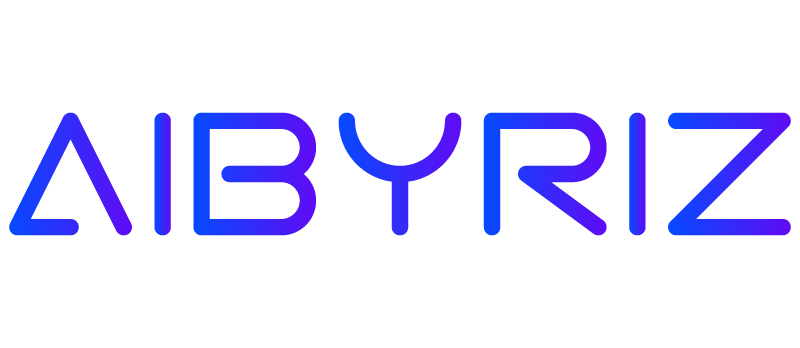Business leaders today face new challenges to predict and prepare for future events. Traditional scenario planning templates are not enough anymore because data complexity and market volatility just need more sophisticated approaches. Leaders who adopt AI-enhanced scenario planning have a clear edge in strategic decision-making. They can anticipate and prepare for multiple future possibilities with better accuracy and confidence.
AI technology reshapes scenario planning through the analysis of big data sets. It identifies hidden patterns and generates detailed future scenarios that humans might overlook. Organisations can develop strategic foresight, build resilience, and make well-informed decisions with this advanced approach. Leaders can explore multiple possibilities, test different strategies, and adapt quickly to changing circumstances through AI’s powerful integration with scenario planning.
The Power of AI in Scenario Planning
Artificial intelligence has fundamentally changed how organisations approach strategic foresight through scenario planning. Traditional scenario planning methods provide value but face challenges with modern business environments’ complexity 1. AI solutions are changing this digital world by providing unprecedented capabilities in data processing and analysis.
Improving data analysis and trend identification
AI systems process huge amounts of data from a variety of sources, such as internal business data, global news, political developments, and scientific literature 2. Organisations can spot patterns and relationships that humans might miss through this detailed analysis 3. AI processes and analyses data at unprecedented speed and scale to create more accurate predictions and responsive strategies 3.
AI-improved data analysis offers these key benefits:
- Live strategy adjustments based on continuous market analysis
- Discovery of hidden patterns and correlations
- A better grasp of market dynamics
- Improved prediction capabilities for future trends
Generating diverse and plausible scenarios
AI can now calculate hundreds of potential scenarios from a single prompt, which has transformed how we approach scenario generation 4. The technology combines scenario elements systematically and refines parameters. It philtres out less plausible options to create a manageable set of viable futures 2. This method works especially well when you have multiple interrelated uncertainties that make traditional scenario planning methods less useful 1.
The system generates various scenarios from regulatory changes to supply chain disruptions. Teams can explore different combinations of multiple events or outcomes 4. This detailed approach will give organisations better preparation for a wider range of possible futures while their planning stays logically consistent.
Providing rich narrative exploration
AI’s most important advantage in scenario planning lies in its power to develop rich, detailed narratives for each scenario 2. These narratives help teams grasp complex scenarios that become more available to broader audiences within the organisation. This leads to better understanding and team member buy-in 2.
The AI system builds narratives through:
- Pinpointing baseline scenarios
- Enriching them with combined trends
- Identifying key challenges and concerns
- Creating detailed, balanced narratives under time constraints
This narrative-building capability helps decision-makers and influencers understand the scenarios and their nuances with associated trade-offs 2. Planning teams can provide feedback and ask questions through this interactive process to arrange the final scenarios with organisational needs and goals.
Key Components of an AI-Enhanced Scenario Planning Template
Organisations need to think over several interconnected components when building an AI-improved scenario planning template. The right implementation of these elements can reshape strategic planning processes while human judgement remains significant for meaningful decision-making.
Automated data gathering and synthesis
Data collection capabilities form the core of any reliable scenario planning template. Modern AI-powered templates use automated data-gathering systems to process information from multiple sources at once. Only 7% of organisations use AI in strategy planning, while 25-30% use it in marketing and supply chain 5. This gap shows untapped potential for companies to gain competitive advantages.
The template should include tools that:
- Update data instantly from internal and external sources
- Sort inputs automatically across business units
- Combine global variables into a single source of truth
- Track key performance indicators continuously
AI-powered scenario generation
The template’s AI engine helps create realistic scenarios in a variety of ways. The system intelligently combines different elements and fine-tunes parameters to generate multiple future possibilities while filtering out unrealistic options 2. Organisations can now explore different combinations of events and outcomes that make logical sense together.
Interactive narrative development
A well-laid-out template should make the creation of rich, detailed narratives easier for each scenario. The AI system knows how to develop complete narratives that make complex scenarios more available and memorable to stakeholders 2. The process identifies baseline scenarios, enriches them with combined trends, and spots key challenges and concerns.
The narrative development component adapts immediate algorithms with psychology models to determine the best ways of shaping the player’s experience 6. This approach will give stakeholders an engaging and relevant scenario generation throughout the planning process.
Strategy evaluation and refinement
The final component evaluates and refines generated strategies. The template should use AI-driven evaluation tools to assess strategies based on multiple criteria. These criteria include resilience to disruptions, resource efficiency, and what it all means 2. Organisations can identify promising strategies and highlight areas that need improvement through this all-encompassing approach.
Organisations benefit most from the evaluation process when they make decisions close to resource deployment time. AI systems can detect changes in assumptions from the original plan 5. This continuous feedback mechanism helps strategies stay relevant as business environments change faster.
Implementing AI-Enhanced Scenario Planning in Your Organisation
Organisations need a balanced approach between technological capabilities and organisational readiness to implement AI-improved scenario planning successfully. The original setup costs of AI-driven solutions remain high 7. However, careful planning and systematic implementation can help organisations achieve the most important returns.
Selecting the right AI tools and platforms
Organisations need a full picture of costs and benefits to choose the right AI tools 7. Decision-makers should think about:
- Infrastructure requirements and scalability
- Integration capabilities with existing systems
- Data security features and compliance
- Cost of maintenance and updates
- Level of vendor support and training resources
Training your team on AI-assisted scenario planning
Education is the lifeblood of successful AI implementation 7. Your organisation needs to invest in complete training programmes that build technical competency and confidence. A global shortage of AI engineers exists, especially when you have sector-specific experience requirements 7. Your organisation should develop internal talent through collaboration across disciplines.
Your training approach needs these key steps:
- Get a full picture of your team’s capabilities
- Create customised learning paths
- Practise with selected AI tools
- Update and evaluate skills regularly
Integrating AI insights with human expertise
AI’s true value in scenario planning shines when it works alongside human expertise rather than taking its place. Organisations achieve operational excellence through AI that complements human knowledge and encourages an environment where strategic human oversight guides AI’s analytical capabilities 8. Organisations should use ‘explainable AI’ or ‘XAI’ approaches that create transparent models to build trust in AI systems 7.
Overcoming implementation challenges
AI implementation offers great possibilities, but organisations must handle several challenges carefully. Cybercriminals can cause severe economic damage through security breaches 7. Organisations should take these steps:
- Set up strong security protocols to prevent data contamination
- Fix connectivity problems with advanced communications technologies like 5G 7
- Define clear strategic goals that match AI initiatives with business growth 7
- Build supportive environments to attract and keep AI talent 7
Stakeholders build trust in the system by understanding the reasoning behind AI-generated predictions 7. This becomes especially important with black-box machine learning systems that don’t readily explain their decision-making process 7. Trust in the technology grows when AI systems demonstrate transparency, fairness, and respect for privacy, which leads to broader acceptance and integration 8.
Organisations can reduce technical complexities with proper planning and adaptation to the changing technological landscape 8. Setup and maintenance costs will drop as AI technologies evolve and become more common, making solutions available to smaller organisations 7. More organisations of different sizes will adopt enhanced scenario planning as AI technology becomes more democratic.
Future-Proofing Leadership with AI-Driven Foresight
The business world is changing faster than ever as artificial intelligence combines with strategic foresight to reshape how organisations plan their future. Research shows that organisations with a strong learning culture are 92% more likely to create and 58% more prepared to meet future needs 9.
Developing adaptable strategies
Future-proofing leadership depends on strategies that evolve with changing circumstances. AI systems can process millions of possibilities within seconds and identify signals of change, patterns, and correlations that humans might miss 10. This computational advantage helps organisations to:
- Spot early signs of emerging trends
- Make decisions free from cognitive bias
- Create multiple scenario outcomes at once
- Review potential effects over different timeframes
- Shape strategies using up-to-the-minute insights
Experts recommend that organisations build “strategic acumen” – a blend of AI insights and human judgement that creates more resilient strategies 10. Leaders can use this approach to anticipate effects and outcomes across numerous scenarios while understanding the opportunities and risks tied to each option 10.
Promoting a culture of continuous learning
AI and workplace dynamics are changing faster than ever. We need strategic learning and development initiatives to stay ahead 9. Organisations will thrive in an AI-enabled future only when we are willing to invest in upskilling and reskilling their workforce 9.
The journey to continuous learning needs these three key steps:
- Creating connected networks throughout the organisation
- Starting action-based learning programmes
- Making room for gradual skill development
Leaders should encourage experimentation and highlight the importance of both successes and failures 9. A mindset that welcomes change and looks for chances to grow becomes our greatest strength in today’s world 9.
Using AI for competitive advantage
A 2021 PwC survey reveals that 86% of CEOs believe AI will become a “mainstream technology” in their companies within the next five years 11. This widespread adoption creates opportunities for companies to gain substantial competitive advantages through smart AI implementation.
AI integration in strategic foresight offers unprecedented capabilities in data processing and analysis. Organisations can train AI to apply sophisticated analytical tools, such as sentiment analysis and cross-impact analysis, which turns raw data into applicable information 10. These improvements substantially extend the breadth, accuracy, and lead time for strategic foresight activities 10.
AI systems can analyse, predict, and inform, but they lack a nuanced understanding of human values, emotions, and societal contexts 10. The best approach combines AI’s computational power with human expertise. This combination helps organisations to:
- Develop more detailed scenario analyses
- Create more accurate predictive models
- Generate innovative solutions to complex challenges
- Stay competitive through continuous adaptation
Success depends on what experts call “double-loop learning” – understanding not just how to solve current problems but also how to prevent them 12. This method requires reflection on why things happen, events, and results to identify and fix systemic problems 12.
Smart organisations create what forward-thinking leaders call a “dynamic AI” that grows with time, instead of becoming a static tool 13. This growth will give AI the ability to adapt to increasingly complex and diverse data sources while remaining effective as a strategic tool 13.
Closing Thoughts
AI-enhanced scenario planning helps business leaders guide their organisations through uncertain times with confidence and precision. Smart organisations welcome this advanced approach because they can process huge amounts of data to create complete future scenarios and make informed decisions. Leaders can build stronger organisations by combining artificial intelligence with strategic foresight while keeping the human aspects of decision-making intact.
Leaders who balance technological capabilities with human wisdom will shape the future. Organisations investing in AI-enhanced scenario planning today will succeed in a complex business environment. Their strategic planning processes stay connected to ground context and values through human involvement. This blend of AI-driven insights and human expertise leads to accurate predictions and well-prepared organisations. Leaders become stronger in this ever-changing world through this powerful combination.
FAQs
Why is artificial intelligence crucial for leadership?
Artificial intelligence significantly enhances the personalisation of leadership development through detailed data analysis, including performance evaluations, feedback surveys, and behavioural assessments. This approach aids in pinpointing an individual’s developmental needs by assessing their strengths, weaknesses, opportunities, and threats (SWOT).
What makes AI planning essential?
AI planning is vital as it enables systems to decompose complex problems into simpler, manageable steps, facilitating the discovery of solutions that achieve specific objectives. Additionally, it assists AI systems in evaluating various potential actions and choosing the optimal one based on anticipated outcomes.
Why should organisations engage in scenario planning?
Scenario planning is crucial for organisations as it allows them to anticipate different future scenarios and develop strategies to address them. This preparation provides organisations with the necessary flexibility and adaptability to not only survive but also prosper in times of change.
Why does every company need an AI strategy?
Incorporating AI into business strategy offers numerous benefits, such as improved decision-making by aligning business goals with the company’s capabilities, resources, and internal context through structured strategic frameworks.
References
[1] – https://www.imd.org/ibyimd/strategy/why-the-future-of-ai-marks-the-end-of-scenario-planning/
[2] – https://hbr.org/2023/11/use-genai-to-improve-scenario-planning
[3] – https://www.innovation-point.com/ai-in-strategic-planning/
[4] – https://www.forbes.com/sites/lisabodell/2023/07/10/your-cheat-sheet-for-using-ai-in-strategic-planning/
[5] – https://www.mckinsey.com/capabilities/strategy-and-corporate-finance/our-insights/artificial-intelligence-in-strategy
[6] – https://faculty.cc.gatech.edu/~riedl/pubs/aaai12.pdf
[7] – https://marketintel.gardiner.com/ai-in-construction-overcoming-the-barriers-to-adoption
[8] – https://profiletree.com/overcoming-ai-implementation-challenges/
[9] – https://www.trainingjournal.com/2024/content-type/opinion/the-future-is-now-cultivating-an-adaptive-mindset-and-skillset-for-the-ai-powered-workplace/
[10] – https://www.frog.co/designmind/reframing-strategic-foresight-in-the-age-of-ai-and-algorithms
[11] – https://www.clearpointstrategy.com/blog/ai-competitive-advantage
[12] – https://mitsloan.mit.edu/ideas-made-to-matter/how-continuous-learning-keeps-leaders-relevant-age-ai
[13] – https://www.dataversity.net/5-tactics-for-adaptive-impactful-and-ethical-ai/














